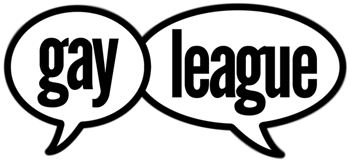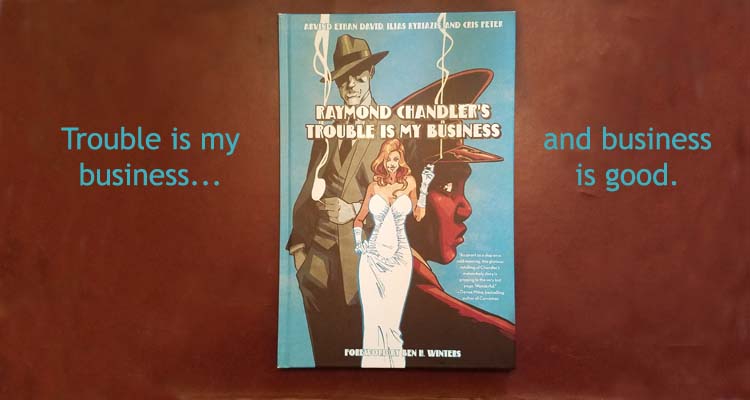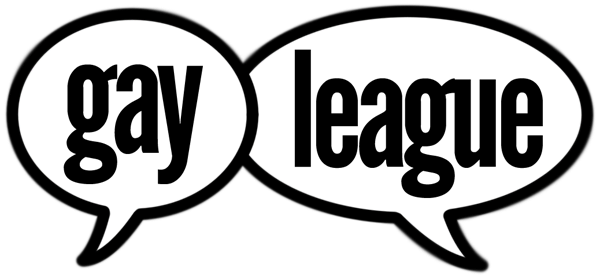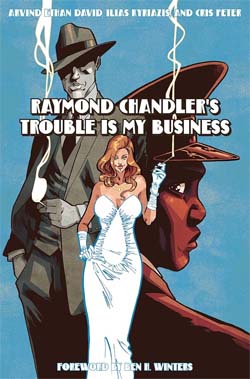
Raymond Chandler
Adapted by Arvind Ethan David and Ilias Kyriazis
Cris Peter – colorist
Taylor Esposito – letterer
John Kuramoto – book design
Pantheon
$29.00
“Trouble is my business,” I said. “Twenty-five a day and guarantee of two-fifty, if I pull the job.”
Raymond Chandler
Sitting on the patio before the sun starts its descent. Dave Brubeck is playing. Turning pages of this book as a nice warm breeze moves in the air. All of it comes together as the story begins to transport me back to a Los Angeles of long past decades. The dusky red hair of femme fatale Harriet Huntress, so wonderfully described by Raymond Chandler as being “…like a fire under control but still dangerous.” The scent of tobacco filling a room, lingering on Phillip Marlowe’s suit. A pack of Lucky Strikes perhaps. Which brings up the question of just how lucky is Marlowe since he seems to strike out often but then he always came back. Another of Marlowe’s pleasures…a good scotch. Marlowe would judge the drink before me — a vodka and low sugar pineapple something something — as pure heresy but scotch is the devil in my case.
Trouble Is My Business is a decades old classic story in the hardboiled detective genre that captivated movie goers and dominated men’s pulp magazines. This best known of novelist Raymond Chandler’s works is recently adapted as a graphic novel that faithfully evokes the ambiance of Marlowe’s bygone world thanks to the diligence of Arvind Ethan David and Ilias Kyriazis and Cris Peter.
One may wonder the necessity to adapt such a seminal work which has stood the test of time. Author Ben H Winters addressed the question in his foreword to the book. After some rumination Winters summed the matter up rather succinctly in his closing: “There is no adaptation that doesn’t add something. This one adds a lot.”
David and Kyriazis’ collaboration is certainly not the first adaptation either. Notably, actor Van Heflin’s distinctive voice brought Marlowe to life for a 1947 radio broadcast program that thrilled listeners while Chandler himself revisited the story and wrote an expanded version which was published in 1950. I am reminded that if it weren’t for writer Gregory Maguire’s novel Wicked: The Life and Times of the Wicked Witch of the West, generally considered to be an adaptation albeit on a much larger scale than David and Kyriazis’ efforts, there would be no Elphaba Thropp and no Wicked film.
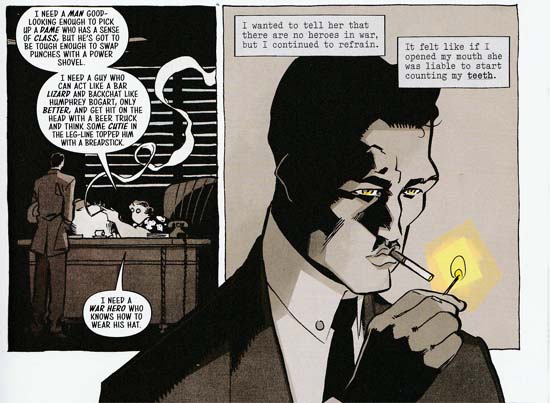
Chandler is all here in spirit. Chandler’s delicious flair for language is lovingly conjured by David, the back and forth staccato like repartee expertly conveyed on the page by Taylor Esposito’s skillful lettering, the alternating gritty and glamorous aesthetics of Los Angeles exemplified so effectively by Kyriaz in Marlowe’s chiseled features contrasted by Huntress’ sensuously pleasing curves with her signature crown of hair. Kyriaz with his distinctive contour line style is a master of these physiques and more. The rest of the ensemble are here – Anna Halsey, the detective who rooks Marlowe because she refuses dirty work; John Arbogast, a character saddled with the indignity of nary a word of that scintillating dialog given the others; suave gambler Marty Estel owed a large debt by the soon to be much richer Gerald Jeeter Jr who naively dangles on his arm paramour Harriet Huntress; and the wealthy and well dressed Jeeter Sr who hires Anna Halsey to extricate his son from Huntress’ clutches. Not to be forgotten is the incredibly discrete and observant George Hasterman.
What changed you ask.
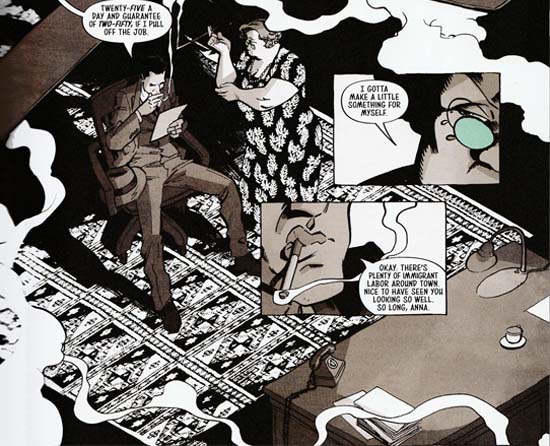
Marlowe is indisputably the main character but this fact didn’t stop David from wondering what storytelling opportunities could arise from wondering what the histories of Harriet Huntress and George Hasterman might be. The opening sequence focuses on a pivotal event in Harriett’s childhood during the early years of the Great Depression. With this flashback Huntress can also be viewed as a flawed person attempting to do right for her family through the only means available to her. Sure, Huntress is still a vamp but one with a heart. In creating George’s story David gives him the promise of a bright future. A future which George discovers is denied to him following his return from the World War II European front simply for being a Black man. So he resorts to relying on his physical attributes and prowess to become the chauffeur-bodyguard-fixer to the aforementioned self centered Gerald Jeeter Sr. Both characters are simply trying to do their best under circumstances over which they have little to no control. Readers familiar with the original will notice that an adjustment has been made from the initial late 1930s period to a later date, 1946 to be exact.
A final surprise from David and Kyriazis awaits readers. To speak more of it risks spoiling a development that also serves as proof of Winters’ claim this is a worthy adaptation. Since this review appears on a site catering to LGBTQA readers I will mention the characters remain true to their heterosexual roots.
Ilias Kyriazis and Cris Peter masterfully bring Marlowe and the cast to life on the page with a firm grounding in the aesthetics of noir color. Think Hitchcock’s Rope and Rear Window for examples of noir color. An elegant composition of its principal characters with a refined color palette placed against a blue background that attracts the eye alludes to 1940s theater movie posters and pulp magazine covers while avoiding exploitative poses and lurid colors intended to attract the attention of the red blooded American male back in the day.
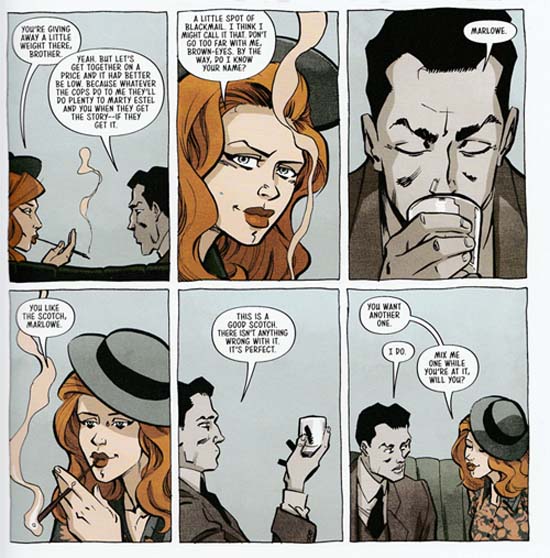
Marlowe’s appearance in black and gray tones on the cover hints at Peter’s decision to use multiple color palettes based on Marlow, Huntress, and George’s characters. Gray is swapped out in favor of sepia for Marlowe; vibrant colors for Huntress; and a range of warm, earthy hues for George. Whether from guns, cigarettes, chimneys, or fires smoke is typically treated as a decorative element by artists and colorists. Kyriazis is no different in this regard…except perhaps he heightened the ornamental aspect perhaps to the point of turning smoke into its own character. After all, cigarette smoking was a pervasive element in noir films just as it was in everyday American culture. Peter used a subtle approach with rendering the smoke color from white to increasingly saturated yellow hues which I found irritating at first to be honest. The reason escaped me till the memory of washing nicotine stained walls in a relative’s home popped back into my mind. Credit to Peter for such attention to detail whether she intended to mimic nicotine or not.
Pantheon’s reputation for well designed books remains intact with this volume designed by John Kuramoto. The mottled tan and cream coloring of the foreword and afterword sections has a pleasing vintage look while for me also recalling handmade Nepalese paper I once saw in an art supply store. The publisher’s standard of using machine sewn binding means physical copies will stand the test of time. The inclusion of page numbers may seem trivial but small details such as this are welcome.
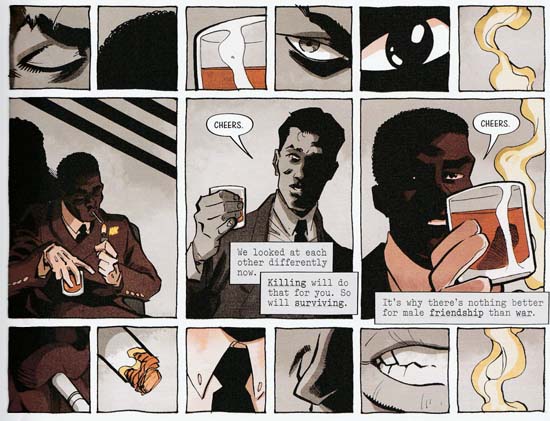
Turn off your phone. Cue up some jazz. Some Charlie Parker followed by the Nat King Cole Trio. Little Willie John’s Fever — the original version — not that Peggy Lee’s cover is anything to sneeze at. Now let yourself be wrapped up in a story of hard knocks, desperation, and love.
Trouble Is My Business is the second project on which David and Kyriazis have collaborated. Their first venture is the three volume comic book adaptation of the Dirk Gently’s Holistic Detective Agency novels written by Douglas Adams by IDW. David other graphic novels are Darkness Visible (with Mike Carey) and Gray, a reimagining of Oscar Wilde’s The Picture of Dorian Gray simply titled Gray. Kyriazis is the artist on the late 2023 Cat Fight mini series scripted by Andrew Wheeler. Much of his work is for Greek comics publishers.
Find Arvind Ethan David on Instagram. https://www.instagram.com/arvind.david/ A list of Kyriazis’ socials can be found here. https://linktr.ee/iliaskyriazis
The publisher put together a short teaser clip for its Youtube channel.
Trouble Is My Business is in bookstores and comic shops now. Copies can be ordered through Bookshop or Bookshop can help you find an indy bookstore near you if you want to shop in person.
National and regional bookshops and retailers selling copies are listed on the publisher’s page.
If all else fails or you prefer, Amazon has print and Kindle options.

